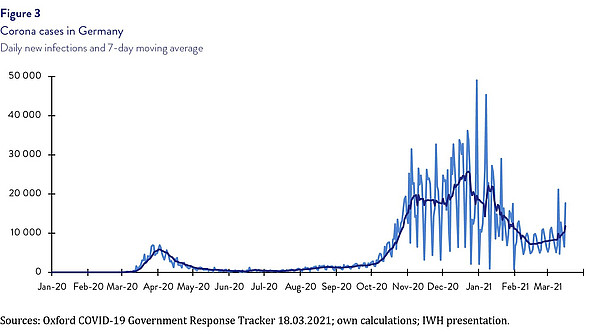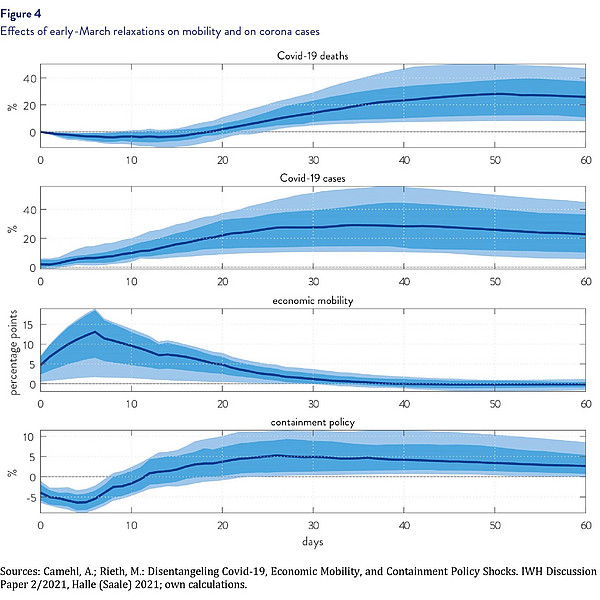Contents
Page 1
IntroductionPage 2
Relaxations and increasing corona casesPage 3
Economic policy implicationsPage 4
Endnotes All on one pageRelaxations and increasing corona cases
In Germany, there is currently intensive discussion about relaxing containment measures. There has already been a relaxation in some areas; for example, face-to-face classes are once again being held in schools in many places, albeit with restrictions, and retail stores are increasingly able to receive customers again. This allows for a resurgence of mobility and personal contact between people. However, the frequency of contact is a major factor influencing the rate at which the coronavirus spreads. The relaxations are not yet accompanied by a systematic testing strategy; and vaccination progress has so far fallen short of expectations. Indeed, recent data thus suggests an increase in mobility (see figure 2) and, at the same time, an accelerated increase in new infections (see figure 3).

The extent to which the current relaxations are increasing economic mobility and the incidence of infection in Germany can be estimated using the empirical relationship between containment measures, economic mobility, and new infections from the past. To do so, we use the model of Camehl and Rieth (2021)5.6 We simulate a counterfactual scenario without the early March relaxations, i.e., the stringency index is held constant in this hypothetical scenario. We contrast this with a scenario in which the stringency index falls by 5%, which is roughly equivalent to its decline in early March. The difference between these two scenarios is shown in figure 4.
Compared with the alternative scenario without easing, the stringency index falls below its initial level for just under two weeks. The easing is associated with a rapid increase in economic mobility. Over the course of the first week, it rises steadily, by as much as ten percentage points. It remains about a month above the level it would have been if the easing had not been implemented. The increased mobility enables more economic and social activity again, so that the negative consequences of the lockdown, for example in the area of education or culture, are mitigated and the economic situation of the affected companies can stabilise again.
However, the increase in economic mobility is accompanied by significantly more new infections. While the increase in cases is initially small due to incubation period, the number of cases continues to rise over the course of the first few weeks compared with the alternative scenario without relaxation. The peak is reached after about a month and amounts to about a quarter more infected persons than without the relaxations. Only gradually do the numbers of cases start to decline again. Even after two months, they are still higher than they would have been without the relaxations.

With a delay of about three weeks, the additional new infections become noticeable in the number of deaths. There is a substantial increase in the number of people who die in association with COVID-19. The increase is proportional to the increased number of infected persons and is approximately 25% after six weeks. Even after two months, deaths are still significantly above the trend in the alternative scenario without relaxations.





